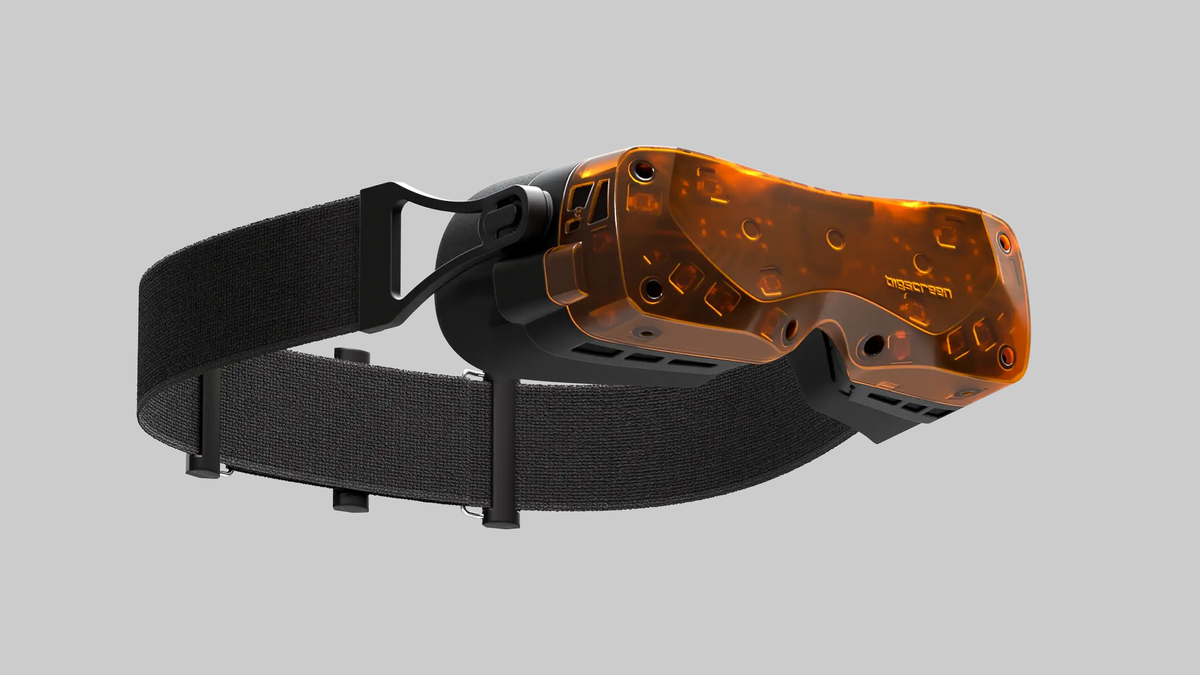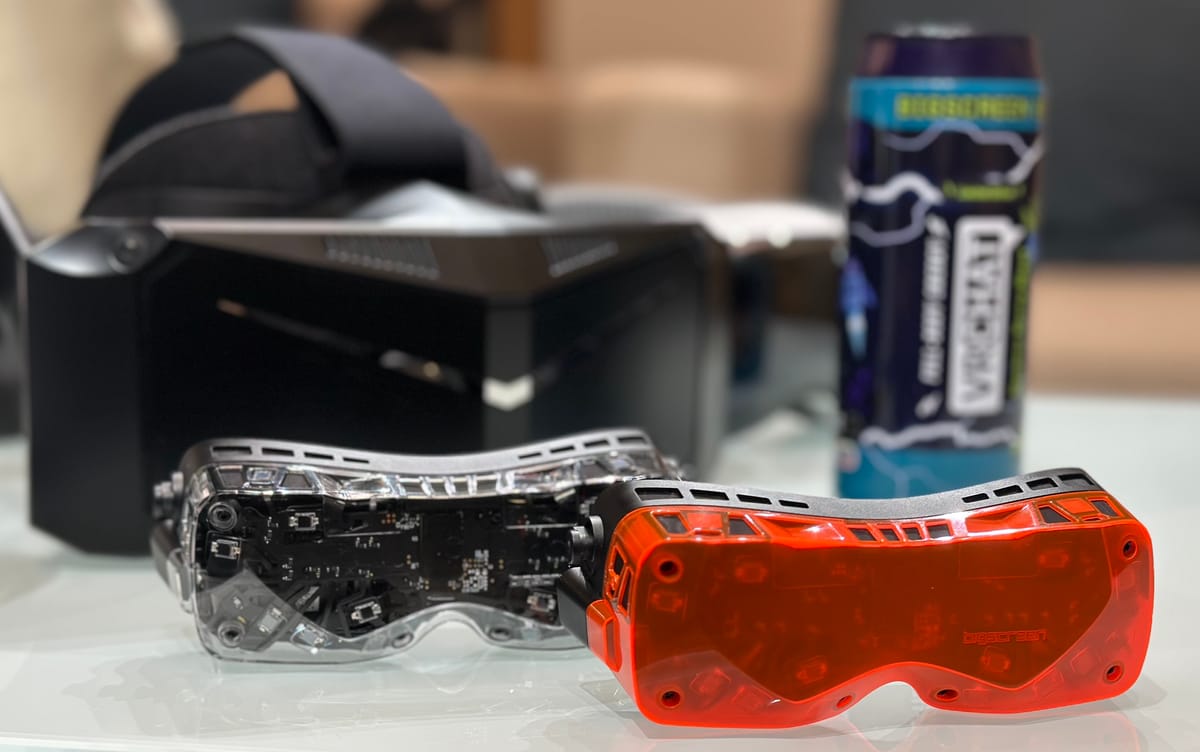WildFly formerly JBoss is a free and open-source application server that helps you build and deploy Java web applications. In this guide, you will learn how to install WildFly or JBoss application runtime on a Debian 12 server.
Monthly Archives: March 2025
First Flight of Isar Aerospace’s Spectrum Rocket Lasted Just 40 Seconds
An anonymous reader quotes a report from Ars Technica: The first flight of Isar Aerospace’s Spectrum rocket didn’t last long on Sunday. The booster’s nine engines switched off as the rocket cartwheeled upside-down and fell a short distance from its Arctic launch pad in Norway, punctuating the abbreviated test flight with a spectacular fiery crash into the sea. If officials at Isar Aerospace were able to pick the outcome of their first test flight, it wouldn’t be this. However, the result has precedent. The first launch of SpaceX’s Falcon 1 rocket in 2006 ended in similar fashion. “Today, we know twice as much about our launch system as yesterday before launch,” Daniel Metzler, Isar’s co-founder and CEO, wrote on X early Monday. “Can’t beat flight testing. Ploughing through lots of data now.”
Isar Aerospace, based in Germany, is the first in a crop of new European rocket companies to attempt an orbital launch. If all went according to plan, Isar’s Spectrum rocket would have arced to the north from Andoya Spaceport in Norway and reached a polar orbit. But officials knew there was only a low chance of reaching orbit on the first flight. For this reason, Isar did not fly any customer payloads on the Spectrum rocket, designed to deliver up to 2,200 pounds (1,000 kilograms) of payload mass to low-Earth orbit. […] Isar declared the launch a success in its public statements, but was it? […] Metzler, Isar’s chief executive, was asked last year what he would consider a successful inaugural flight of Spectrum. “For me, the first flight will be a success if we don’t blow up the launch site,” he said at the Handelsblatt innovation conference. “That would probably be the thing that would set us back the most in terms of technology and time.”
This tempering of expectations sounds remarkably similar to statements made by Elon Musk about SpaceX’s first flight of the Starship rocket in 2023. By this measure, Isar officials can be content with Sunday’s result. The company is modeling its test strategy on SpaceX’s iterative development cycle, where engineers test early, make fixes, and fly again. This is in stark contrast to the way Europe has traditionally developed rockets. The alternative to Isar’s approach could be to “spend 15 years researching, doing simulations, and then getting it right the first time,” Metzler said. With the first launch of Spectrum, Isar has tested the rocket. Now, it’s time to make fixes and fly again. That, Isar’s leaders argue, will be the real measure of success. “We’re super happy,” Metzler said in a press call after Sunday’s flight. “It’s a time for people to be proud of, and for Europe, frankly, also to be proud of.” You can watch a replay of the live launch webcast on YouTube.
Read more of this story at Slashdot.
‘There is No Vibe Engineering’
Software engineer Sergey Tselovalnikov weighs in on the new hype: The term caught on and Twitter quickly flooded with posts about how AI has radically transformed coding and will soon replace all software engineers. While AI undeniably impacts the way we write code, it hasn’t fundamentally changed our role as engineers. Allow me to explain.
[…] Vibe coding is interacting with the codebase via prompts. As the implementation is hidden from the “vibe coder”, all the engineering concerns will inevitably get ignored. Many of the concerns are hard to express in a prompt, and many of them are hard to verify by only inspecting the final artifact. Historically, all engineering practices have tried to shift all those concerns left — to the earlier stages of development when they’re cheap to address. Yet with vibe coding, they’re shifted very far to the right — when addressing them is expensive.
The question of whether an AI system can perform the complete engineering cycle and build and evolve software the same way a human can remains open. However, there are no signs of it being able to do so at this point, and if it one day happens, it won’t have anything to do with vibe coding — at least the way it’s defined today.
[…] It is possible that there’ll be a future where software is built from vibe-coded blocks, but the work of designing software able to evolve and scale doesn’t go away. That’s not vibe engineering — that’s just engineering, even if the coding part of it will look a bit different.
Read more of this story at Slashdot.
AMD’s Latest Wares, NVIDIA RTX 50 & Kernel Changes Excited Linux Users So Far In 2025
As the last planned article of the quarter, here is a look back at the most popular Phoronix content from Q1’2025 with 822 original news articles and 40 featured articles / Linux hardware reviews written by your’s truly. There were interesting hardware launches from Intel, AMD, and NVIDIA this quarter along with a never-ending pace of new open-source software innovations and the unfortunate ongoing drama within the free software community…
kew adds internet radio support
kew’s recent development has focused on improving the stability of the program, but the program’s latest release has added internet radio and mouse support.
Intel CEO Lip-Bu Tan Says Company Will Spin Off Non-Core Units
Intel Chief Executive Officer Lip-Bu Tan said the chipmaker will spin off assets that aren’t central to its mission and create new products including custom semiconductors to try to better align itself with customers. From a report: Intel needs to replace the engineering talent it has lost, improve its balance sheet and better attune manufacturing processes to meet the needs of potential customers, Tan said. Speaking at his first public appearance as CEO, at the Intel Vision conference Monday in Las Vegas, Tan didn’t specify what parts of Intel he believes are no longer central to its future.
“We have a lot of hard work ahead,” Tan said, addressing the company’s customers in the audience. “There are areas where we’ve fallen short of your expectations.” The veteran semiconductor executive is trying to restore the fortunes of a company that dominated an industry for decades, but now finds itself chasing rivals in most of the areas that define success in the field. A key question confronting its leadership is whether a turnaround is best served by the company remaining whole or splitting up its key product and manufacturing operations. Tan gave no indication that he will seek to divest either part of Intel. Instead, he highlighted the problems he needs to fix to get both units performing more successfully. Intel’s chips for data center and AI-related work in particular are not good enough, he said. “We fell behind on innovation,” the CEO said. “We have been too slow to adapt and meet your needs.”
Read more of this story at Slashdot.
Nitrux 3.9.1 Launches with Kernel 6.13 and Fiery Web Browser
Nitrux Linux 3.9.1 “mk” debuts with major MauiKit, Qt, and kernel updates, improved firmware, Fiery browser, and optimized power management tools.
UK’s GCHQ Intern Transferred Top Secret Files To His Phone
Bruce66423 shares a report from the BBC: A former GCHQ intern has admitted risking national security by taking top secret data home with him on his mobile phone. Hasaan Arshad, 25, pleaded guilty to an offence under the Computer Misuse Act on what would have been the first day of his trial at the Old Bailey in London. The charge related to committing an unauthorised act which risked damaging national security.
Arshad, from Rochdale in Greater Manchester, is said to have transferred sensitive data from a secure computer to his phone, which he had taken into a top secret area of GCHQ on 24 August 2022. […] The court heard that Arshad took his work mobile into a top secret GCHQ area and connected it to work station. He then transferred sensitive data from a secure, top secret computer to the phone before taking it home, it was claimed. Arshad then transferred the data from the phone to a hard drive connected to his personal home computer. “Seriously? What on earth was the UK’s equivalent of the NSA doing allowing its hardware to carry out such a transfer?” questions Bruce66423.
Read more of this story at Slashdot.
[$] Improving the merging of anonymous VMAs
The virtual memory area (VMA), represented by struct
vm_area_struct, is one of the core abstractions of the kernel’s
memory-management subsystem; a VMA represents a portion of a process’s
address space with the same characteristics. A memory-mapped file will be
represented by (at least) one VMA, as will the process’s stack or a region
of anonymous memory. Efficiently managing VMAs and the logic around them
is crucial for good performance overall. Lorenzo Stoakes focused on one
specific problem area: the merging of anonymous VMAs, during the
memory-management track at the 2025 Linux Storage, Filesystem,
Memory-Management, and BPF Summit.
Intel and Microsoft Staff Allegedly Lured To Work For Fake Chinese Company In Taiwan
Taiwanese authorities have accused 11 Chinese companies, including SMIC, of secretly setting up disguised entities in Taiwan to illegally recruit tech talent from firms like Intel and Microsoft. The Register reports: One of those companies is apparently called Yunhe Zhiwang (Shanghai) Technology Co., Ltd and develops high-end network chips. The Bureau claims its chips are used in China’s “Data East, Compute West” strategy that, as we reported when it was announced in 2022, calls for five million racks full of kit to be moved from China’s big cities in the east to new datacenters located near renewable energy sources in country’s west. Datacenters in China’s east will be used for latency-sensitive applications, while heavy lifting takes place in the west. Staff from Intel and Microsoft were apparently lured to work for Yunhe Zhiwang, which disguised its true ownership by working through a Singaporean company.
The Investigation Bureau also alleged that China’s largest chipmaker, Semiconductor Manufacturing International Corporation (SMIC), used a Samoan company to establish a presence in Taiwan and then hired local talent. That’s a concerning scenario as SMIC is on the USA’s “entity list” of organizations felt to represent a national security risk. The US gets tetchy when its friends and allies work with companies on the entity list.
A third Chinese entity, Shenzhen Tongrui Microelectronics Technology, disguised itself so well Taiwan’s Ministry of Industry and Information Technology lauded it as an important innovator and growth company. As a result of the Bureau’s work, prosecutors’ offices in seven Taiwanese cities are now looking into 11 Chinese companies thought to have hidden their ties to Beijing.
Read more of this story at Slashdot.
OpenAI Plans To Release a New ‘Open’ AI Language Model In the Coming Months
OpenAI plans to release a new open-weight language model — its first since GPT-2 — in the coming months and is seeking community feedback to shape its development. “That’s according to a feedback form the company published on its website Monday,” reports TechCrunch. “The form, which OpenAI is inviting ‘developers, researchers, and [members of] the broader community’ to fill out, includes questions like ‘What would you like to see in an open-weight model from OpenAI?’ and ‘What open models have you used in the past?'” From the report: “We’re excited to collaborate with developers, researchers, and the broader community to gather inputs and make this model as useful as possible,” OpenAI wrote on its website. “If you’re interested in joining a feedback session with the OpenAI team, please let us know [in the form] below.” OpenAI plans to host developer events to gather feedback and, in the future, demo prototypes of the model. The first will take place in San Francisco within a few weeks, followed by sessions in Europe and Asia-Pacific regions.
OpenAI is facing increasing pressure from rivals such as Chinese AI lab DeepSeek, which have adopted an “open” approach to launching models. In contrast to OpenAI’s strategy, these “open” competitors make their models available to the AI community for experimentation and, in some cases, commercialization.
Read more of this story at Slashdot.
You Can Get a Lifetime License to Windows 11 Pro for $15 Right Now
We may earn a commission from links on this page. Deal pricing and availability subject to change after time of publication.
If your current Windows setup is feeling a bit outdated or you’re setting up a brand-new PC, you might want to check out this Microsoft Windows 11 Pro deal on StackSocial—you can get this single-device lifetime license for just $15, which would usually cost you $200 at the Microsoft Store. Once you buy, the redemption code and setup instructions hit your inbox instantly. That said, make sure your system is eligible before you hit purchase. This isn’t an upgrade path for unsupported PCs—it’s a fresh install for machines that meet the full list of Windows 11 Pro requirements.
Now, about the OS itself—it feels like Windows finally got a glow-up without messing with your workflow. The layout is cleaner, Snap Layouts and virtual desktops make multitasking smoother, and redocking windows actually works like you’d expect. If you’re into voice typing or just want better search across apps and docs, it delivers. Windows 11 Pro also throws in some solid pro tools like BitLocker for encryption, Hyper-V for virtualization, and even a sandbox mode for testing apps safely. You’re also getting DirectX 12 Ultimate, so your hardware can shine during gaming or graphic-heavy tasks, assuming your machine is beefy enough.
Security is another win here. Windows 11 Pro doubles down with biometric login, Smart App Control, and TPM 2.0 requirements, which makes it a tougher nut to crack. It also includes the new AI-powered Copilot and baked-in Microsoft Teams support, which might appeal to remote workers. Just a heads up, you won’t get an Office upgrade bundled in with this deal—this is strictly a Windows license. It will work alongside Office if you have a separate license, though (if you’re on a Mac using Parallels Pro). If your PC meets the specs (like a 1GHz processor, 4GB RAM, TPM 2.0, and UEFI firmware, among others), and you’ve been holding off on a full Windows upgrade, this $14.97 deal is about as straightforward and affordable as it gets. Just be sure to double-check your specs before clicking “buy.”
Baldur’s Gate 3-Themed Stardew Valley Mod Hit With Takedown By D&D Owner

Baldur’s Village is a fan expansion that adds the characters from Dungeons & Dragons RPG Baldur’s Gate 3 to the cozy, pixel art farming sim Stardew Valley. The head of Larian Studios, which made Baldur’s Gate 3, thought it was really cool. But Wizards of the Coast, who owns the D&D license? Not so much. The tabletop…
7 Best Free and Open Source Restic Front-Ends
restic is a backup program that is fast, efficient and secure. We feature some useful front-ends for restic.
Riot Games’ League of Legends TCG is officially called Riftbound
Riot Games has unveiled new details for its upcoming tabletop game, called Riftbound – The League of Legends Trading Card Game. We first got a look at this TCG under the codename Project K in December. The latest trailer showed off new artwork for the cards, including fresh takes on the LoL characters that aren’t just copies of their in-game champion portraits. The card UI has also gotten some extra polish compared with what was showed late last year.
The team at Riot has been incorporating player feedback into the game’s first set, called Origins. This set will have more than 300 different cards, and familiar LoL champions including Jinx, Viktor and Lee Sin will star in pre-built decks for this inaugural set. For the serious collectors, there will also be secret rare versions of the champion cards with unique art.
In addition to the previously revealed multiplayer aspect, Riftbound offers a path for reaching fans who don’t have experience in this card game genre. Riftbound will have a box called Proving Grounds where champions like Lux, Annie, Master Yi and Garen will help newer players to get acclimated to TCG basics.
The timeline for the Riftbound is also starting to firm up, with its China launch is scheduled for summer 2025. Some English speaking countries will also see the game arrive this year, but other markets will have to wait until 2026; the devs didn’t specify which regions will be on which timeline.
This article originally appeared on Engadget at https://www.engadget.com/gaming/riot-games-league-of-legends-tcg-is-officially-called-riftbound-212507458.html?src=rss
One Of The Year’s Biggest Games Is An Indie Drug-Dealing Sim Made By A Solo Dev

If you look at the the top played games on Steam, you might notice something new right at the top. Above the usual heavy hitters and longtime classics you’ll spot Schedule I, an open-world, first-person drug-dealing sim developed by one guy that, as I write this, has over 340,000 concurrent players on Steam.
More Bigscreen Beyond 2 Headsets Sold Already Than Original In First Year
Bigscreen says it has now sold more Beyond 2 headsets than it did the original Beyond in its first entire year.
Bigscreen Beyond 2 and Beyond 2e were announced and went on sale 11 days ago, and a day later Bigscreen said it sold more Beyond 2 headsets in the first 24 hours than it did Beyond 1 in its first 6 months, which it says represents 10 times as many units.
While the first batch of Beyond 2 and Beyond 2e headsets are set to ship in April and May respectively, new orders of each will ship in June.
 UploadVRDavid Heaney
UploadVRDavid Heaney
Like the original Beyond, Bigscreen Beyond 2 and 2e are tethered PC VR headsets that use SteamVR Tracking, so you’ll need a PC with a powerful graphics card and at least one (ideally at least two) tracking base stations from Valve or HTC. You also need to provide your own input, such as Valve Index controllers or a steering wheel or HOTAS setup.
Compared to the original, Beyond 2 adds clearer, wider lenses with independent IPD adjustment, all while actually weighing 20 grams less, and Beyond 2e also adds eye tracking via just 1.05 grams of tiny sensors.
The original Bigscreen Beyond is used by 0.45% of SteamVR users after two years on the market, around 1 in 200 of the VR users on Steam. We’ll keep a close eye on the adoption of Beyond 2 in the coming months, with its sales velocity suggesting it could surpass the original by the end of the year.
You can read more about the features and specifications of Beyond 2 and Beyond 2e here, and you can read our hands-on impressions of Beyond 2 from GDC 2025 here.
 UploadVRIan Hamilton
UploadVRIan Hamilton
With new Gen-4 model, Runway claims to have finally achieved consistency in AI videos
AI video startup Runway announced the availability of its newest video synthesis model today. Dubbed Gen-4, the model purports to solve several key problems with AI video generation.
Chief among those is the notion of consistent characters and objects across shots. If you’ve watched any short films made with AI, you’ve likely noticed that they’re either dream-like sequences of thematically but not realistically connected images—mood pieces more than consistent narratives.
Runway claims Gen-4 can maintain consistent characters and objects, provided it’s given a single reference image of the character or object in question as part of the project in Runway’s interface.
How to watch the Switch 2 Nintendo Direct
With a Tomodachi Life sequel teased and the last few Switch 1 games announced, the deck is cleared for Nintendo’s next video presentation on the Switch 2. The appropriately titled “Nintendo Direct: Switch 2” presentation is slated for April 2 at 9AM ET / 6AM PT, and will stream on Nintendo’s YouTube channel.
Nintendo revealed what the new console looks like in a short teaser video in January, which confirmed details like the device’s larger screen, and teased things like a new Mario Kart and some sort of mouse functionality for the Switch 2’s Joy-Con controllers. The company’s April 2 presentation should answer even more questions about what’s exactly different about the Switch successor, how much it’ll cost and when it’ll launch.
Join us on April 2nd at 6am PT for #NintendoDirect: Nintendo Switch 2 – 4.2.2025, where we will share a closer look at #NintendoSwitch2.
► https://t.co/XCecVa9Zid pic.twitter.com/ACu5pZUd0D
— Nintendo of America (@NintendoAmerica) February 5, 2025
You can read our article collecting Switch 2 rumors and reports for a preview of what Nintendo might cover. Particularly pertinent for anyone thinking about buying the new console, recent leaks indicate that Nintendo could open up pre-orders for the Switch 2 as early as April 9, and ship out the device in June.
We’ll have to wait for the Nintendo Direct to fill in those details, and hopefully learn more about the launch lineup of Switch 2 games in the process. You can watch along on Nintendo’s YouTube channel or right in this article once the stream goes live.
This article originally appeared on Engadget at https://www.engadget.com/gaming/nintendo/how-to-watch-the-switch-2-nintendo-direct-210632411.html?src=rss
Google To Pay $100 Million To Settle 14-Year-Old Advertising Lawsuit
An anonymous reader quotes a report from Reuters: Google has agreed to pay $100 million in cash to settle a long-running lawsuit claiming it overcharged advertisers by failing to provide promised discounts and charged for clicks on ads outside the geographic areas the advertisers targeted. A preliminary settlement of the 14-year-old class action, which began in March 2011, was filed late Thursday in the San Jose, California, federal court, and requires a judge’s approval.
Advertisers who participated in Google’s AdWords program, now known as Google Ads, accused the search engine operator of breaching its contract by manipulating its Smart Pricing formula to artificially reduce discounts. The advertisers also said Google, a unit of Mountain View, California-based Alphabet, misled them by failing to limit ad distribution to locations they designated, violating California’s unfair competition law. Thursday’s settlement covers advertisers who used AdWords between January 1, 2004, and December 13, 2012.
Google denied wrongdoing in agreeing to settle. “This case was about ad product features we changed over a decade ago and we’re pleased it’s resolved,” spokesman Jose Castaneda said in an emailed statement. Lawyers for the plaintiffs may seek fees of up to 33% of the settlement fund, plus $4.2 million for expenses. According to court papers, the case took a long time as the parties produced extensive evidence, including more than 910,000 pages of documents and multiple terabytes of click data from Google, and participated in six mediation sessions before four different mediators.
Read more of this story at Slashdot.
